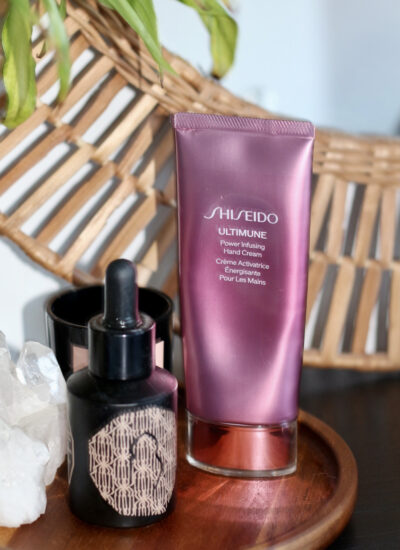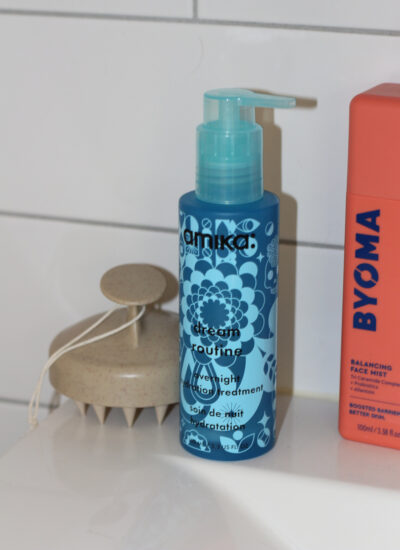
By Wishtrend | TECA 1%*
I was sent the TECA 1% Barrier Cream for review a long time ago. I feel really bad that it’s taken me this long to write about it. I also accidentally got two in the mail and hosted a giveaway, you might even remember it?
Anyway, the reason it’s taken me this long to mention more about this product is that I’ve been unsure if it’s been working for me or not. And to be honest, I still don’t have a definitive answer to that. It’s quite perplexing, as most products you kind of know immediately if it does something or not.
At the start of the year, my skin was going through some downs, and I reached for it a lot. I tried experimenting with it, different ways and situations to use it. At the same time as I was trying to figure this product out, I kept a close eye on the reviews that were slowly flowing in at WishTrend. Looking at the reviews, this should be a five-star product. But I wasn’t feeling it.
THIS SITE USES AFFILIATE LINKS

What is it and who is it for?
Teca 1% is a post-acne spot-treatment that helps strengthen, calm and improve the skin’s overall health. It has a high percentage of Centella Asiatica extract (asiaticoside, asiactic acid, madecassic acid) which helps regenerate skin and restore damaged and weakened skin barrier. It can additionally help to fade inflammatory pigmentation from acne spots and reduce acne scars from forming. The cream is also formulated with allantoin that soothes irritated skin and improves moisture levels in dry skin.
It can be used by all skin types and is made for those with problematic and damaged skin or with weakened skin barriers from external stimulations (acne extractions or laser treatments).
The cream is a silicone based gel formula that comes out clear without fragrance. I don’t personally have a problem with silicones and know that they aren’t pore-clogging. But this product does contain hydrogenated castor oil which can be mildly comedogenic on some. Overall, the formula is suited for sensitive skin.
How To Use it
It’s supposed to be applied last in your routine to an affected area.
However, I found it to sometimes feel too heavy being on top of all my products. So I found the best way to apply it was either as a serum after cleansing and toning. Or, if applying it as your last step, cleanse the area from your serums and moisturizer with a cotton swab, and then apply it.
It’s important to note that this cream is more or less supposed to be used after you’ve popped/dried a pimple – or something along those lines – to help fade redness/PIH and avoid scarring. Or when your skin is experiencing irritation of some sort.


Experience
I’m guessing my skin problems are more deeply rooted than what a cream can take on. Because my results were more or less “meh” to none at all.
The reviews seem a bit exaggerated, I don’t find this product to work fast or be any mindblowing. I experimented, several times, to put it on not so fully mature and fully mature blemishes and cysts, where my skin would feel irritated and itchy. But it only did an okay job at calming down the inflammation or the pimples. Sometimes it even made things worse for unexplainable reasons. Not the least, I also rarely saw it fade redness faster than, let’s say, chemical exfoliants.
Ultimately, this wasn’t the source that calmed my acne in the end. What did is still unclear, but definitely not this cream.
The TECA cream is surprisingly hydrating for being silicone-based. Like I’ve already mentioned, if you use it on top of your skincare routine it can easily feel heavy. And in my case, that was just too much hydration for my skin; it would have the opposite effect of calming.
This leads me to be unsure of what its place should be in a routine. Maybe it should be an all-over moisturizer instead of a spot-treatment?
Conclusion
I loved the idea and was very excited to try this cream but was left feeling pretty disappointed. Which led me to take a break from it. I do occasionally pick this up when I get a bug bite or if I’m feeling red or dry. But I believe there are better healing ointments out there. But truly kudos for trying to make a lightweight one, as a lot are usually heavy. That could be something to consider if you’re in the market for a new ointment and find others to be pore-clogging.
I saw some reviewers mentioned it helped with dry patches, and I can see it being good for that. The cream glides like a primer and could be used as a hydrating and calming primer before makeup if you have dry skin. Also, if you have a lot of redness from generall irritation (not from acne) this cream could probably help with that. But other than that, I don’t know how much I can recommend it to people with acne or with a lot of PIH. I feel like another layer isn’t the answer. And unless you have very sensitive skin, there are better products out there that fade red spots faster. I still feel very uncertain about this product, but based on the reviews I don’t see why not to highlight it.







